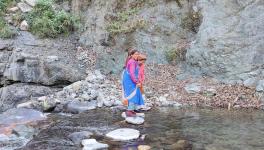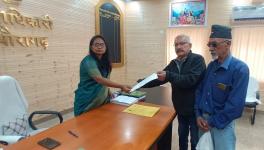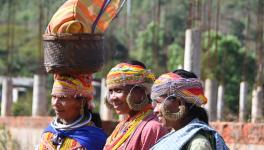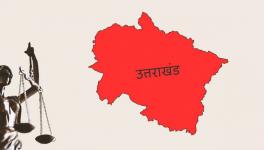Uttarakhand: How Miyawaki and ANR Methods Worked Wonders for Plantation
Fenced area of Fir plantation through ANR method. Photo credit-Nitin Pant
The rapid expansion of agriculture, urbanisation and industrialisation, clubbed with newer challenges like climate change and global warming, have led to the erosion of natural environment and the extension of desertification. There is an urgent need for the rehabilitation of critical areas; to bring back lost biodiversity and ecosystem services by resorting to restoration strategies.
Many state governments have been undertaking intensive plantation during the monsoons, to increase green cover, but the majority of these do not survive after the rains are over. Round the year conventional plantations by the forest departments too meet the same fate across the country.
The research wing of the forest department in Uttarakhand conducted a comparative study between traditional, Miyawaki and Assisted Natural Regeneration (ANR) method of plantation – for a period of two years – and had astounding results. The success rate of Miyawaki and ANR was 100% while the success rate for the traditional method ranged from 30-40% in the hills and 50-60% in the plains.
The Miyawaki method is a technique pioneered by Japanese botanist Akira Miyawaki in the 1980s – it helps in creating an indigenous ecosystem and restoring critically degraded sites with dense, native forests in a short period of time. This method has been applied widely by volunteers in India and the world over, mostly giving an impetus to urban afforestation by turning small backyards into mini-forests.
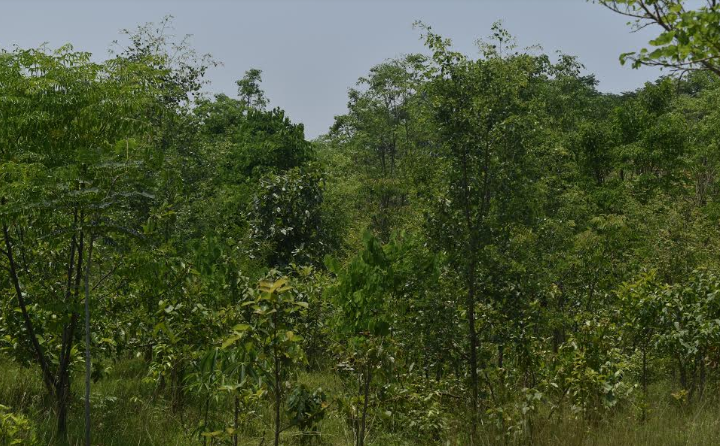
Miyawaki method of Plantation in Terai.
Under ANR, the selected site is fenced for protection from any outside interference or disturbance. This allows nature to play its role in helping the plants to grow unfettered and for seedlings to grow on their own.
The Miyawaki trial was conducted at Pipalparao, in the plain area of the Terai Central Forest division on a patch of one-forth of a hectare of land. It was also conducted in a hilly area near Dwarson, Ranikhet Forest Division, in one-fifth of a hectare of land. The ANR experiment was carried out in a hilly area in Kanchula-Khark, Kedarnath Forest Division, over half a hectare of land.
Nitin Pant, a range official at the research wing, told NewsClick: “Under the Miyawaki method, native trees were identified and divided into four layers: shrubs, sub-trees, trees, and canopy trees; to create an ideal ecosystem which also exists in a naturally evolved forest. So we planted saplings of species like Banj, Utis and Kow for canopy, followed by tree species like Bammor, Akhrot , Padam; sub-tree species like Bedu Burans, Mahal and finally, shrubs species like Ghingaru, Hisalu, Kilmora.”
The soil is treated with biomass and cow dung, gram flour and jaggery is mixed into the soil to provide rich micro-organisms to strengthen the quality of soil, as well as to enhance the perforation capacity, water retention capacity, and nutrients.
“In this method, trees are planted as close as possible – in the same area – which not only saves space, but planted saplings also support each other in growth and to block sunlight from reaching the ground, thereby preventing the growth of weeds. The saplings become maintenance-free after the first three years,” Pant added.
Under ANR, the area became vibrant. With just 28 mother fir trees in March 2019, 382 fir trees, 145 Kharsu plants and a number of shrubs, herbs and lower plants grew in just a span of seven months.
Traditional plantation was done with tree species like Khair, Shisham, Amaltas, Banj, and Deodar, near all the sites where the Miyawaki technique was used for trial.
Aside from their success rate, the expenditure was also compared.
Experiment in Terai Central Forest Division


Experiment in Hill Division at Ranikhet Forest Division

“The cost analysis shows that the cost of plantation per unit area of land is much higher in the case of Miyawaki than in the traditional method. It is due to the fact that more plants are raised in close vicinity in Miyawaki than in the traditional method. In reality, since the plants in the Miyawaki method have a higher success rate of survival, therefore, raising one plant in the Miyawaki method becomes more economical in the longer run,” said Pant.
The cost in the ANR method was at about Rs 1.38 lakh, against Rs 2.10 lakh per hectare in the traditional method.
An analysis found that the ANR was most economical, while the Miyawaki method gave faster and more effective results in creating a viable forest ecosystem.
The Conservator of Forest (research wing), Sanjiv Chaturvedi, told NewsClick: “The greatest advantage of the Miyawaki method is as a restoration tool: it is faster and more holistic than traditional plantations. It is therefore recommended to restore degraded areas and areas where traditional afforestation programs have failed in the past. Weeds have been observed to be practically suppressed under this method; therefore it can also be used as a rehabilitation method in weed-infested areas where weed eradication is proposed.”
He said that the mixed forest prepared also caters to all sorts of creatures like birds, butterflies, insects and also provides fodder for local communities.
However, the Miyawaki method cannot take the place of monoculture for commercially important forest crops, which require more space. The researchers recommended separate spaces for commercial plantation.
The traditional method which hinges on monoculture plantations with no soil treatment, showed poor results.
Just days prior to the submission of the report, officials of the forest department deliberated on the plantation work undertaken in the last few years.
A concern was expressed over the failure of a significant portion of plantations through traditional methods. Various reasons were put forth for the same -- the lack of adequate facilities or rainfall, difficult geographical conditions, lack of selection of native species for plantation, lack of good quality seeds and saplings in the forest department-run nurseries for plantation purposes and the failure to remove dead plants in the plantation area.
The ANR method was encouraged to be adopted to carry out plantation work under CAMPA (Compensatory Afforestation Fund Management and Planning Authority) scheme.
The writer is a freelance journalist who writes on the environment.
Get the latest reports & analysis with people's perspective on Protests, movements & deep analytical videos, discussions of the current affairs in your Telegram app. Subscribe to NewsClick's Telegram channel & get Real-Time updates on stories, as they get published on our website.









